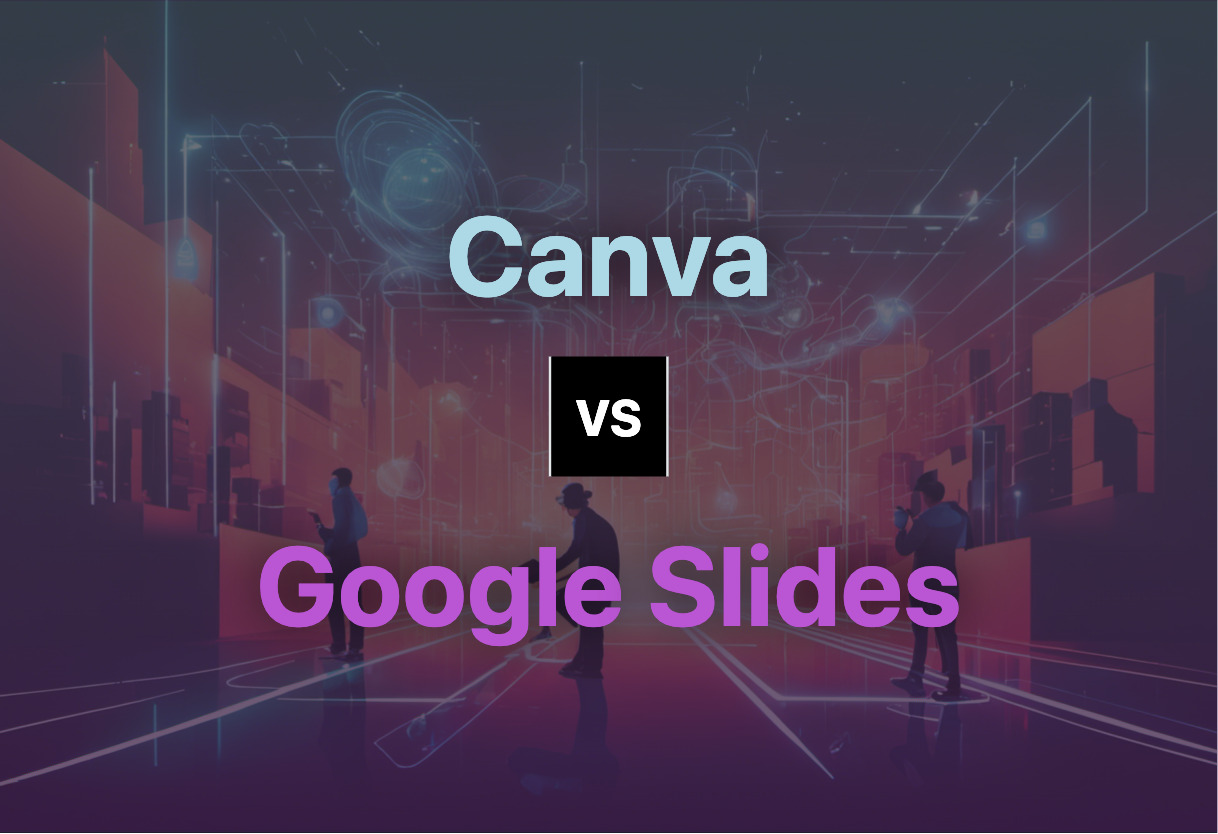Google Slides excels in collaboration, offline functionality, and integration, ideal for G Suite regulars. However, for razzle-dazzle presentations, Canva with its drag-and-drop design and plethora of pre-built templates, is preferable, specifically for marketing professionals and enterprises.

Key Differences Between Canva and Google Slides
- Design: Canva provides drag-and-drop, custom fonts, and photo editing. Google Slides features functional templates, assisted by Smart Compose and Autocorrect.
- Collaboration: Google Slides syncs for real-time sharing and editing. Canva lacks real-time collaboration, but offers shared design spaces.
- Accessibility: Both allow edits on any device. Google Slides works directly in browser and Canva has two mobile apps.
- Pricing: Google Slides as a part of Google Workspace has varied pricing. Canva pricing ranges from free to enterprise tiers.
| Comparison | Canva | Google Slides |
|---|---|---|
| Launch Year | 2013 | Unspecified |
| Products/Services | Canva, Canva Pro, Canva for Enterprise, Canva for Education, Canva for Nonprofits | Online tool for creating and sharing real-time presentations |
| Overall Rating | 4.7 | Unspecified |
| Mobile Apps Availability | Yes | Unspecified |
| Data breach history | Yes, in 2019 | No records available |
| Value | $26 billion (2023) | Unspecified |
| Competition Target | Google and Microsoft in office software | Microsoft PowerPoint |
| Offline Access | Unspecified | Yes |
| File Formats Supported | Unspecified | .png, .jpg, .gif, .mp4, .pdf, .wmf, etc. |
| Operation | Online-based | Browser-based, offline editable |
What Is Canva and Who’s It For?
Canva, an online graphic design platform founded in 2013, empowers businesses of all sizes to create stunning marketing content, presentations, and more. Its intuitive, drag-and-drop user interface and array of design elements like custom fonts, frames, and shapes make it a preferred tool for both design novices and experts. Canva is the perfect fit for educators, nonprofits, and enterprises seeking cost-effective design solutions.

Pros of Canva
- Intuitive drag-and-drop design interface
- Wide range of pre-built templates
- AI-powered assistant, Magic Write
- Inclusion of free versions like Canva for Education, Canva for Not-for-Profit
Cons of Canva
- Experienced a data breach impacting around 139 million users in 2019
- Canva Pro and Canva Enterprise can be pricey for small businesses
What Is Google Slides and Who’s It For?
Google Slides is an online tool integral to the Google Workspace, designed for teams to create, present, and collaborate on presentations in real-time. Its sleek integration with other Google apps like Google Sheets and Google Drive, along with offline accessibility, make it a favorable choice for businesses, educators, and students requiring seamless collaboration.

Pros of Google Slides
- Real-time collaboration
- Integration with Google apps
- Autosave feature
- Can edit Microsoft PowerPoint presentations
Cons of Google Slides
- Some functionality concerns in comparison to Microsoft PowerPoint
- Design preference may lean towards PowerPoint’s extensive template selection
So, Canva or Google Slides?
Choosing between Canva and Google Slides largely depends on your needs, functionality requirements, design preference, collaboration levels, and cost. Here’s a breakdown:
For Designers
Embracing Canva could be the right choice. Its extensive features like drag-and-drop design, photo editing, custom fonts, pre-built templates, and AI-powered copywriting assistant set a robust platform for creative designs. Canva’s wide array of pre-made design templates drastically reduces the time spent on designing from scratch.

For Business Magnates and Enterprises
If collaboration is a high priority, then Google Slides makes the cut. Its real-time collaboration, autosave and version tracking, added to security and privacy measures, make it a tool built for business. The offline accessibility and integration capability with other Google apps makes it more appealing for businesses.

For Educators and Students
While Canva offers a robust platform for creating visually appealing content perfect for teaching materials, Google Slides has a strong presence due to its simplicity, ease of use, and collaborative features. Embedded in the Google ecosystem, Google Slides offers a more streamlined educational experience.

Comparing Canva vs Google Slides, the decision pivots on design vs collaboration. If you’re artistically inclined or need to create high-quality visual content rapidly, Canva should be your go-to. In contrast, if your focus is on collaborative work, sharing, and real-time editing, Google slides ascends as the frontrunner.
Grant Sullivan
Content writer @ Aircada and self proclaimed board game strategist by day, AI developer by night.





